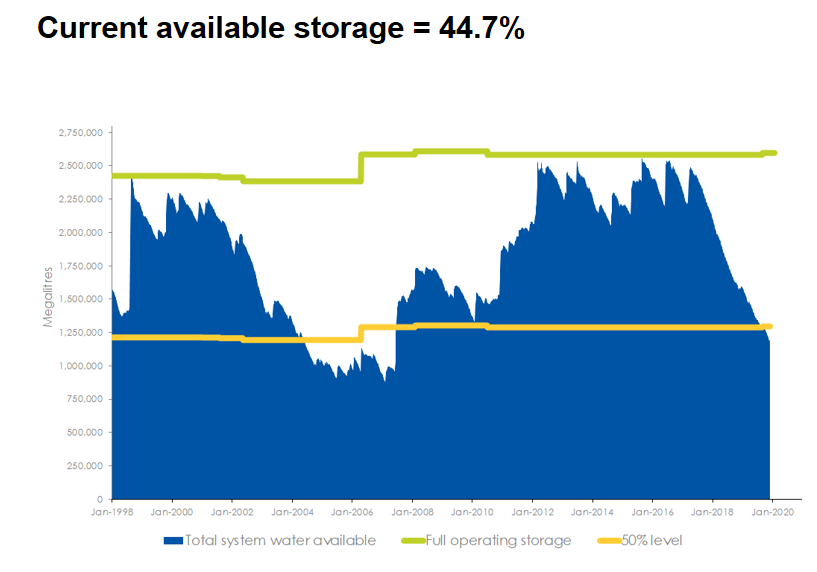Sydney’s water storages continue to plunge at a rate that makes the Millennial Drought look like child’s play:

There’s no end in sight either, according to the Bureau of Meteorology, with no significant rainfall predicted until April.
And when rain does finally arrive, the lake which supplies 80% of Sydney’s water is facing possible contamination from bushfire ash:
The Green Wattle Creek fire has burnt about 120,000 hectares around Lake Burragorang, which supplies about 80 per cent of the city’s water behind Warragamba Dam. The blaze has a perimeter of 560 kilometres, the Rural Fire Service said.
The resulting bushfire ash contains organic material and concentrated nutrients such as phosphorous and nitrogen. While the ash acts like a sponge, if sufficient rain falls in a short time that material could be pushed into the dam, triggering a range of water treatment challenges.
“The worst case scenario would be a very intense rainfall event – 50-60 or maybe 100mm – falling within a few hours,” said Stefan Doerr, a researcher at UK’s Swansea University, who has studied fires in Sydney’s catchments.
As I keep saying, Sydney’s fast diminishing water supplies are being exacerbated by the federal Government’s ‘Big Australia’ mass immigration policy. Since the Millenniel Drought ended in 2006, Sydney’s population has ballooned by one million people (~20%), which has dramatically increased water demand.
The maths is simple. At an average of 200 litres per day, an additional 1,000,000 people represents an extra 200 million litres of extra water consumed every day.
Thus, since the Millennium drought, our Federal politicians have managed to worsen Sydney’s water security with rapid immigration.
So, with Sydney’s population projected by the ABS to swell by around 4.5 million people over the next 48 years – almost doubling the city’s population – driven completely by mass immigration:

And droughts to become more common and severe and evapotranspiration rates skyrocket.
Where will Sydney’s future water supply come from?
The answer is obvious. The New South Wales Government will need to build a battery of expensive, energy-sucking and environmentally damaging desalination plants along the coast, which will dramatically increase users’ water and energy costs.
Or the federal government could take the sensible option and simply slash immigration.

